亞洲大學視覺傳達設計學系副教授
Associate Professor, Department of Visual Communication Design, Asia University
Article of famous designers
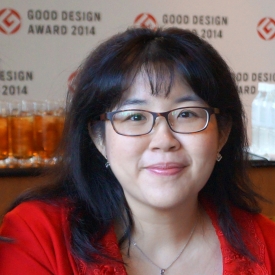
亞洲大學視覺傳達設計學系副教授
Associate Professor, Department of Visual Communication Design, Asia University
TheJapanese GOOD DESIGN AWARD, which is organized by the public interestincorporated foundation, Japan Industrial Design Promotion Organization(JIDPO), has fifty years of history. It is one of the four major design awardsin the world, and one of the most authoritative design awards in Asia. Thisaward originated in the "Good Design Selection System" in 1957. Thissystem, known as G-Mark, was created by the Ministry of International Trade andIndustry (MITI) of Japan, but had been administratively reformed toprivatization after 1998, and continuously operated by JIDPO until now. Throughrigorous annual multi-layered selections of the organizer, selected G-Mark GoodDesign Winning Products will be awarded the G-Mark Good Design logo, which wasdesigned by the famous Japanese designer Yusaku Kamekura, and will berecommended to Japanese general consumers.
Thehead judge of the 2014 G-Mark Good Design jury was the design director of MUJI,Naoto Fukasawa, and the vice head judge was the visual designer Taku Satoh. Thejury consisted of more than sixty design experts from all over the world, andevaluation lasted about three months; this is known to be one of the moststrict and rigorous evaluation processes in global design competitions. The2014 G-Mark Good Design Competition attracted 801 companies or groups, andaward-winners included well-known companies such as Sony, Panasonic, MUJI,Motorola, ASUS, and Toyota. Many well-known Taiwanese firms had previously wonthis prestigious design award, but this year was the first time that Taiwanesestudents won the award because of the high threshold of G-Mark rules whichrequires that participating works must be sold to the public or are about to besold. This time, I had the honor of leading five Taiwanese students from AsiaUniversity entering the competition and winning the 2014 G-Mark Good Design Award,and receiving the award together with other teachers and students from ouruniversity. Here I briefly share what I had experienced for the reference ofother teachers and students interested in the entire process.
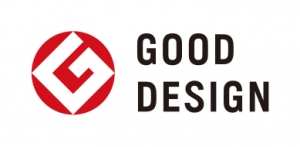
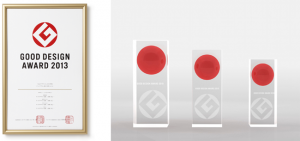
Introduction to the G-Mark Competition
TheG-Mark Good Design Award is not simply a design competition, as stated by thePolicy and Method of Screening mentioned in their official website: "TheG-Mark Good Design Award does not consider the word “Design” to be a noun butto be a verb. Therefore, the screening for the G-Mark Good Design Award isconducted with an idea of “Design” different from that commonly used inpublic." The design idea of this award focuses on “Endless and continuouscreative thinking activity" to make the lives of people more affluent.Judges interview about the background and process of each entry and observe itsstatus at this moment. In other words, the screening for the G-Mark Good DesignAward is focusing on "What meaning and value may the participating objecthave?" in the time axis, past, present, and future, and then initiatesdiscussions and evaluations.
The registration of this award starts from April each year, andenter the stage of evaluation in June after the First Screening of onlinedocuments and the Second Screening of physical item(s). The award-winningexhibition and the award ceremony are held after October, and the award-winningyearbook is published the following March. The entire activity lasts about oneyear (Fig. 1). Starting in 2012, G-Mark divided the work collection area intofour categories: "life," "industry," "publicissue," and "innovation," as well as the three hierarchies of"Item object," "communication," and "organizational structure."Entry fees are charged in phases. The entry fees for screening a small entrywithout electricity include the First Screening Fee of 10,800 Japanese Yen(JPY) and the Second Screening Fee of 59,400 JPY. The Basic Exhibition Fee ofaward-winners is 124,200 JPY, and the Yearbook Publication Fee is 32,400 JPY.From entry to yearbook publication, winning the G-Mark Good Design Awardrequires a budget of 226,800 JPY (approximately NT$59,000). In addition, theentry process requires filling out a detailed registration form with strictspecifications, but the G-Mark organizers have detailed descriptions andillustrated steps on the G-Mark website in Japanese, Chinese, and English.Interested teachers and students are recommended to view the G-Mark websitebeforehand. (http://www.g-mark.org/)
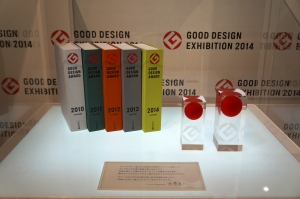
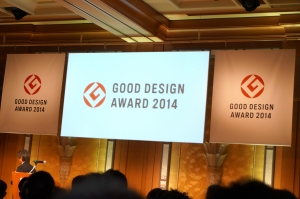
The Screening Process
The experience of participating in the G-Mark Good Design competition has beenvery different compared with other international design competitions. Mostother design competitions usually ask contestants to upload files of designworks, and/or to deliver the physical item to the organizer for evaluation.G-Mark is different in that in addition to representative photos of designworks, contestants are required to provide the following information forreference of the jury in the evaluating process: development background, designidea, significance of planning and development, creative ingenuity, designerreflections, performance and other characteristics, personal messages to thejudges, and the specification of intellectual property rights. All the requiredinformation can be filled out in English, but each information field has astrict letter limit; any extra letters are not allowed. One very special partof the G-Mark competition is the narration of works. It emphasizes "whatthe design can give to people or society," for example, signifying theplanning and development of the design process. The G-mark jury hopes tounderstand "through the entry’s design idea, what suggestion can be givento people or to society, and the hopefully provided value and expectedeffect." The jury wants to know "in the process of developing thedesign works, what reflections and thoughts from the designer(s) do thedesigner(s) hope to convey to users or to society?" The questions andcontents repeatedly echo the purpose of this contest: "focus on endlessand continuous creative thinking activity to make the lives of people moreaffluent." It is a competition attaching considerable importance to themetaphysical concept.
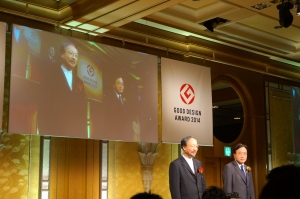
In the first screening, judges determine "whether this work meet thethrust of the G-Mark Good Design Award" and "whether it meets certainconditions" according to the contestant’s pictures and information on thewebsite. All entries must pass this phase before they can enter the secondscreening; therefore, the content and statements entered during registrationare very important. The second screening involves thorough examination of thephysical work by the G-Mark jury who discuss among themselves if the work isworthy of the G-Mark Good Design Award. At the second screening, designers arerequired to be present, and may be asked questions by the jury to explain theirwork, that is, the Interactive Hearing. During the second screening as well asthe final exhibition of prize-winning works, participants will be invited tolayout their own works by themselves; this allows all contestants to have afull sense of participation from the submission of the works to the exhibitionof the works after winning the G-Mark Award.
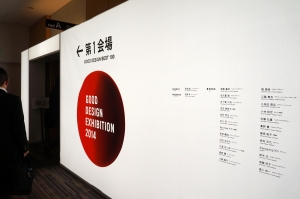
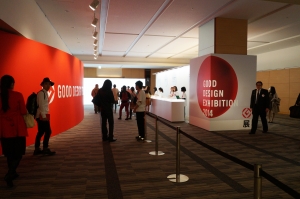
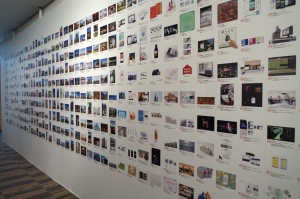
Award Ceremony
The venue and award ceremony of the G-Mark Good Design Exhibition (GExhibition) are not in sites like museums or art centers which may not bevisited by the general public, but at the "Tokyo Midtown," which islocated in Roppongi in Tokyo. Tokyo Midtown is one of Japan’s largest mixed-usedevelopments, which contains a variety of shops, restaurants, offices,apartments, art galleries, parking, and a luxury hotel. It functions like alarger version of Taipei 101.
Japanese exhibitions seem very different from European ones. Visual images ofthe exhibition can be seen everywhere as one approaches the main venue. Themain visual logo appears both inside and outside the venue. At first glance, itis just a red circle, but appears brilliantly and vividly. The entire G-MarkExhibition, including the ceremony site, the entrance to the exhibition venues,the multiple exhibition venues, and the corridors between venues, displayimages that are visually impressive with penetrating power, even though the exhibitionlasts only five days.
The 2014 G-Mark Good Design Award ceremony was held on the second floor of theRitz-Carlton, a five-star hotel located in Tokyo Midtown. Winners of the"G-Mark Good Design Award" are first selected, and then from this group,the "Good Design BEST100" winners are chosen. Furthermore, the GoodDesign Special Award, the Good Design Gold Award, the Good Design Award ofSmall and Medium Enterprises, the Good Design Award of the Japan Chamber ofCommerce and Industry, and the Design for the Future Award are selected fromthe Good Design BEST100. Also from the Good Design BEST100, nine items arenominated for the Grand Award. On the day of Award Ceremony, designers of thenine Grand Award candidates give a presentation of their works; afterwards, allthe other G-Mark winners along with the jury vote together to decide who willwin the "Good Design Grand Award," followed by the awardscertification ceremony.

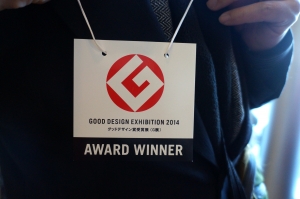
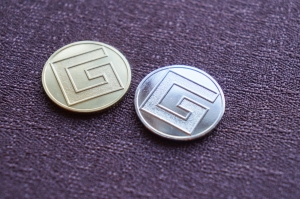
Good Design
The head judge, Naoto Fukasawa, mentioned during the ceremony that he believesthe G-Mark Good Design Award is looking for "Quality of Comfort." Anydesign, no matter in which field, that is useful and practical, that providesreassurance and reliability to users, is a good design. This competitionconsiders that all winning works represent excellent design and high quality,with thoughts of human nature. The vice head judge, Taku Satoh, also mentionedthat there are many products we like, but those items may lose their usefulnessone year later. However, there are also some items bought by consumers withoutthought that may still be useful ten years later or more; is this a problem ofproduct or design? In the G-Mark exhibition, a special area displayed GoodDesign products in the market that have lasted for over a decade, including ourfamiliar Morinaga Milk Candy packaging and 3M Scotch 810 Magic Tape, and manyothers.
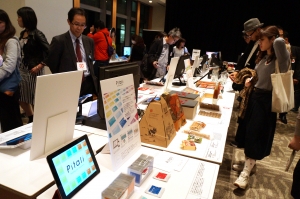
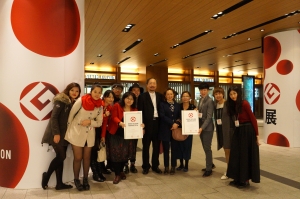
I have been fortunate to have participated in Japan’s G-Mark Good Design Awardand presented at the ceremony, opening up different visions and thoughts ofdesign. Here I remind other designers not to be confined to specific issues anddesign performances, but to open ourselves to a deeper thinking of long-termfuture sustainability. I am very grateful to policies of the Ministry ofEducation, as well as support from Asia University for giving me this specialopportunity. I hope this simple experience will be helpful for those designenthusiasts also interested in participating.